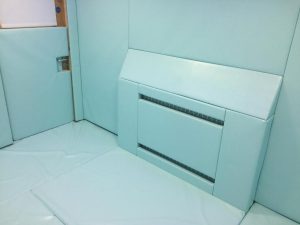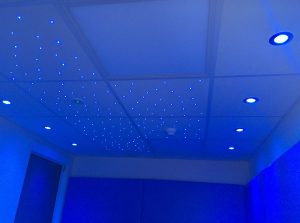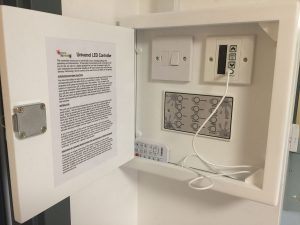Your Options for Calming and De-escalation Rooms
As you can imagine, with different room sizes, shapes and with different user needs, no two systems are ever the same. However, to give you a guide we have broken down the different elements you can consider when designing and installing a Calming Room. Below shows our simple guide to what types of Sensory Serenity De-escalation rooms can created.
You know the people who will be using the room. You are aware of any destructive tendencies, ages, physical size and strength. All this information is important to ensure the right system is specified and supplied. You will also know the space you have available and any limitations as to size, ingress and egress or obstacles such as pipework or electrical services that may need taking into account.
The next step is to get in touch and book a Consultation and Design. We offer a FREE no obligation proposal service, where one of our advisors will look at your requirements and budget, then tailor a system to suit your needs. If you have any questions or queries then please feel free to get in touch and we can guide you through the Process.



Considerations for De-escalation Rooms
Generally a standard item within a De-escalation Room. The Wall Padding needs to be well made and securely fixed to the wall to reduce the likelihood of destructive tendencies being successful. The primary purpose is to remove sharp edges and hard surfaces that could be used to create physical injury. All our Protective Padding is tailor made to ensure surfaces are protected and safe.
We have a wide range of colours and thicknesses available. Cut outs can be made for electrical fixtures and other obstacles such as radiators and pipe work. The fabric we use is PVC coated on a woven nylon substrate. It is Fire Resistant, UV Resistant and Phthalate Free. All our grades of foam are Fire Retardant and our backboards are FSC certified. This is true for all our Protective Padding.
The next thing to consider is whether floor padding will be required. Usually this is the case, as it ensures protection of hard surfaces, but also provides a comfortable place to lie and/or sit whilst using the De-escalation Room. Openings for doors can be incorporated. Our Protective Floor Padding is made in house by our skilled team to ensure the perfect fit. Wide range of colours and thicknesses available.
Wherever possible door padding can be supplied. Cut outs will be provided to fit around existing door furniture and windows. In some cases a new door may be best suited, especially where door locations do not allow for 2 pad depths when open. In this case a door opening outwards from the room may be the best solution and sourcing a local specialist contractor will be most financially viable. A change of door furniture may also be beneficial as very often door handles are the last major hazard.
There are many options to protect windows within a room. Our designers will work with you to find the perfect solution. Depending on the use of the room and its likely occupants a solution is normally easily achievable. Some people will ask for windows to be boarded over which we can do, but attention must be made to both light levels and ventilation.
One important factor to aid in the de-escalation process is providing the client with a suitable environment which is comfortable. Anything else may actually make the situation worse. We offer a wide range of furnishings for de-escalation rooms. From simple beanbags and seating benches through to seclusion room beds and chairs. Again, the selected items should be suitable for the expected occupants, making sure risks are closely managed.
A calming sound system can be installed to create a more tranquil setting and to promote relaxation and de-escalation. Anti-vandal and anti-ligature options are available to make sure it is fit for purpose. In terms of the types of music that can be played, there are multiple options. Form a simple Bluetooth Sound System, through to USB, SD, Radio and even CD Players.
Mood Lighting can be installed to further aid de-escalation and calming. In some cases this lighting can also be interactive, therefore enabling the service user to be distracted through interacting with their surroundings. This does however need to be carefully considered and managed. The aim is to provide the tools for De-escalation, but not create a reason to have to visit the room. If interactive lighting is used it should be tailored to the service users circumstances and needs. Maybe saving it to the end of a session as a reward for calming down.
Other Sensory Equipment can include effect projectors, fibre optic ceilings, bubble screens and even video projection. You could even include fragrance and theming to help create calm. This really is down to the what you are looking to achieve and whether you feel these items may be of benefit. In many cases these are included in de-escalation rooms that are used for scheduled sessions rather than for “emergency events”.
Suitable for larger areas these systems can have pre-defined timed programs running through a range of sound, light and video sequences. These systems will have additional sensory elements to further increase the effect within the calming room. These are useful in changing the environment at given times without the need for supervisor control.
Regardless of your choices, all our systems are inclusive of design, installation, training and our unrivalled aftercare support. Our design team will carry out a thorough site survey to ensure the best possible solution and fit. Our team of engineers travel the country daily installing systems just like these. All our Engineers are DBS checked and fully employed by the Company (no sub-contractors) ensuring we are in full control of our service levels and quality of workmanship.